Electricity
by Cyrus Schayegh
December 17, 1957, Tehran. Hassan Mir-Husseini is livid. Brought before the judge for having illegally tapped into Tehran’s electricity network, he does not mince words. Did not he apply for a network subscription long time ago? Did not the state monitored company disappoint? Was not it, hence, his right to take matters into his own hands? Unimpressed, the judge hands Mir-Husseini a six months prison sentence. But Tehran’s daily Ittila‘at hears the defendant’s cri de coeur. It has good reason. Five decades after the introduction of electricity to Iran and a decade after World War II, when electricity demand started rising, Tehran’s mushrooming population, especially its middle classes, is trying by hook or crook to get the juice of modern life. Ittila‘at publishes many an angry ‘letter to the editor’ by Tehranis, as well as by residents of provincial towns, who complain about specific electricity providers and state officials; and with thinly disguised racism and some hurt pride, asks why the Iranian capital’s electricity supply is less reliable than that of many Afghan villages, not to mention neighboring capitals like Baghdad or Ankara and Western cities. Ads for new neighborhoods like Tehran Pars make sure to praise its up-to-date electricity network. And ads for refrigerators reflect the challenge to wire up a demographically exploding city like Tehran, whose population doubles to two million from 1950 to 1960: “Power is out! But my fridge is working”: in this ad from 1955 below, the housewife below is as happy as a clam.
She does not strike you as Iranian? You are right: the Servel company, and its ad for an oil-driven refrigerator, are American. But as far back as the 1950s, Tehranis and other Iranians did not see electricity as a Western prerogative. They asserted it as a material precondition and a powerful symbol for living a modern life: as their right. As Mir-Husseini put it pithily, “in the contemporary world, one should not have to live with an oil lamp!” What’s more, the sense that Iran ought to be materially part of the modern world showed not only in electricity. By the 1950s, the ‘modern life’ to which electricity was a key was one of accelerating mass consumerism, particularly in the capitalist ‘First World,’ but also in the Soviet and eastern European parts of the ‘Second World,’ and, through increased imports, also in certain places and for certain social classes in ‘Third World’ countries. In Iran, from the mid-1950s, consumer good imports especially from Western countries, including the USA, skyrocketed; Iranian producers cranked up output, too; and consumer festivals, processions, puzzles, and competitions attracted masses that were eager to gain fame, win products as prizes, and obtain free samples. When in 1957 Tehran’s first department store, Furushgah-i Firdawsi, opened, crowds thronged its doors for hours before the keys were turned – and only days later, the first shoplifters were caught.
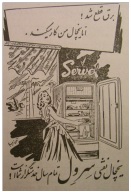
“Electricity was cut off, but my fridge still works!”
All this happened at a time when Iranian politics turned around the return to power, in a 1953 coup d’Etat by American and British intelligence and Iranian royalists, of Muhammad Reza Shah Pahlavi. In the years that followed, his throne was rickety – and he knew it. He and his state did not cope by opening the political system – a regime and an opposition party created in the late 1950s were lampooned as Pepsi Cola and Coca Cola: different names, same thing – but by repressing all communists, coopting some nationalists, as well as promising the good life. It was against this background of a politics of material promise that state involvement in the mainly private, not well organized electricity market expanded in the 1950s, becoming dominant in the 1960s. The government did not find one silver bullet for its electricity problem. In Tehran, in the 1950s, it imported French and U.S. diesel generators; in 1961, the hydro-electrical Karaj Dam, on the eponymous river northeast of the capital, went on line. Providing as much electricity as the three generators put together, its large lake quickly became a popular excursion spot for Tehranis.
Like electricity, that dam was not only a key to a modern life, not simply a means to an end. It symbolized – rather grandiosely – being modern. This, too, was not something particularly Iranian. Indian Prime Minister Jawaharlal Nehru memorably called dams ‘temples of modern India’ (and visited the Karaj Dam construction site, reciprocating a visit by the shah to an Indian site). The USA was famous for its enormous Tennessee Valley Authority, built in the 1930s as part of President Roosevelt’s New Deal, to which Cold War Washington took foreign dignitaries, and versions of which informed dam building around the world, including in Iran. The Soviets, too, were building gigantic hydro-electrical stations and showcased, also to visitors from Iran, how their electricity served the masses. Thus, the Cold War had a cultural, mass-consumerist dimension. By the 1950s, though, the ultimate in electricity generation was not dams, but nuclear power. Sure, Iranians had witnessed its tremendous destructiveness in 1945 in Japan, and as Iran neighbored atomic bomb test sites in Soviet Central Asia, there were recurrent concerns about radioactive clouds. At the same time, nuclear energy was the grail of electricity-powered modern life. Although Iran seriously started acquisition for the first time only in the 1970s, already in the 1950s reports especially about Soviet and American nuclear reactors, like the one accompanying the below ‘drawing of the new atomic power station’ in Pennsylvania, from 1958, lit up people’s imagination.
Iranians’ interest in nuclear energy is not new, then. It did not start with the 1979 revolution, did not even begin in the last decade of the shah’s rule, but dates back as far as the early post-war years. Besides, they were not alone: whether acquiring nuclear power or not, others were equally fascinated. But perhaps most momentous as one historical backdrop to the nuclear negotiations between Iran and the 5+1, which peaked in an agreement in summer 2015, Iranians have for more than half a century affirmed electricity as the right of a people living in the modern era.

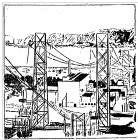
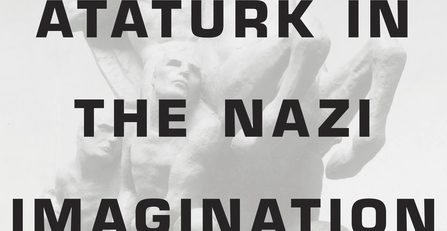
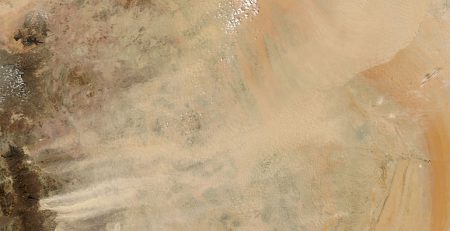
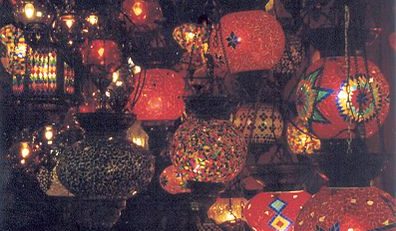
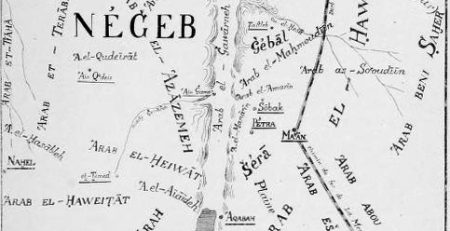

Leave a Reply